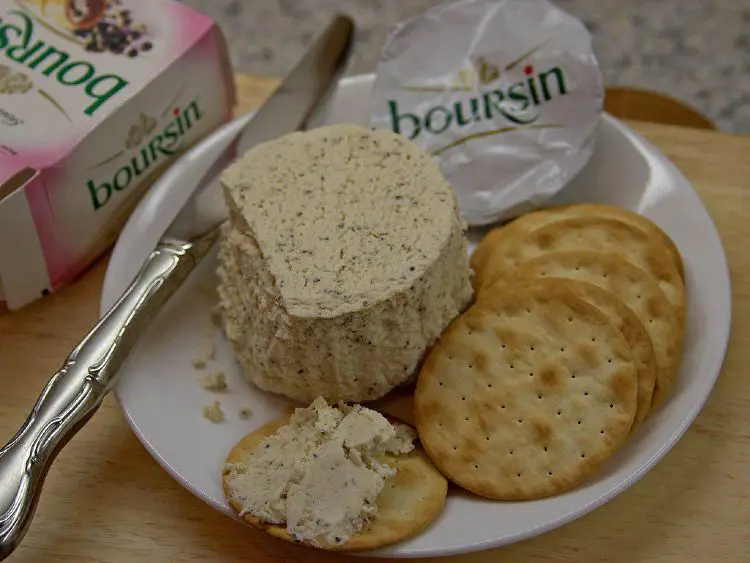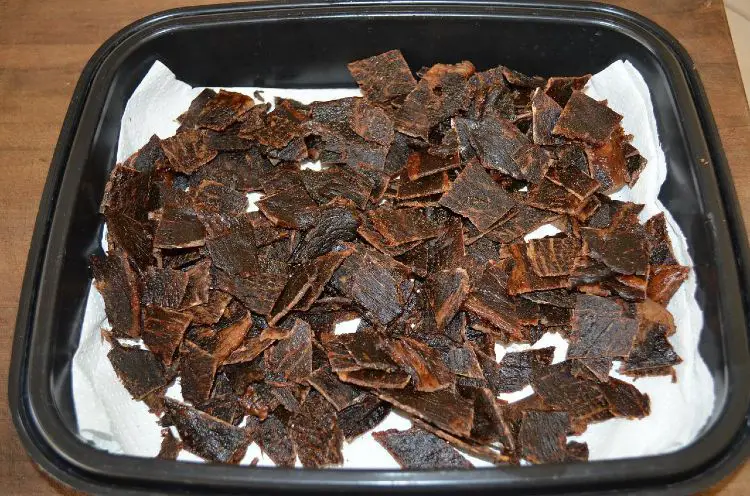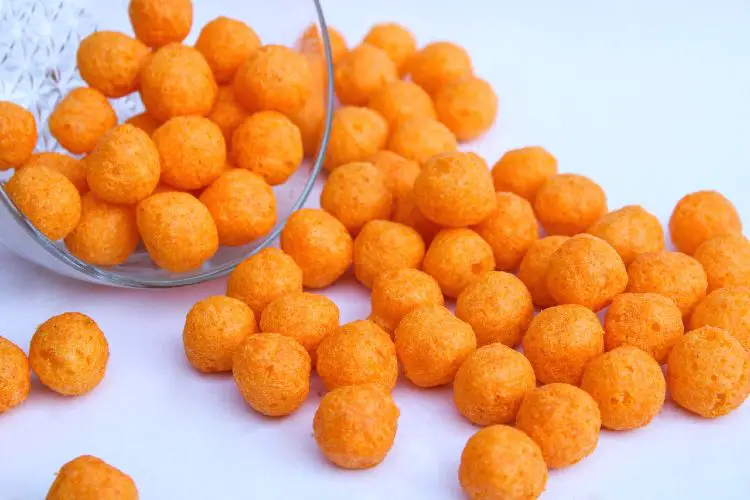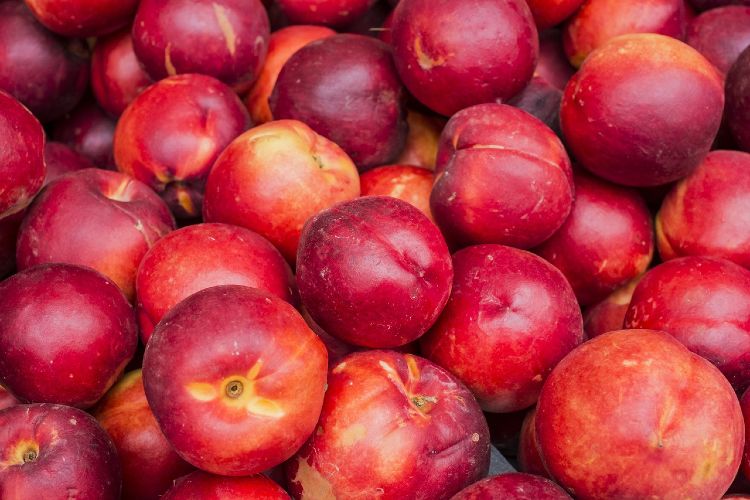Fruits That Start with W (Complete List of 50+ Fruit Names)
Welcome to the world of fruits that start with W!
From the exotic and tropical to the familiar and seasonal, these fruits offer a diverse range of flavors, textures, and colors. Whether you’re a fan of juicy berries, luscious melons, or unique citrus varieties, there’s something intriguing waiting for you in the world fruits beginning with W.
Get ready to discover the wonders of wild water lemon, sweet winter melon, tangy wolfberries, and many more. Join us on this flavorful journey as we explore the fascinating realm of fruits that begin with “W”.
List of Fruits Starting with W
Wahoo
Wahoo, also known as winged elm, is a fruit that belongs to the elm family. It is native to North America and is known for its small, winged seeds that resemble helicopters. The seeds are surrounded by a papery coating and are dispersed by wind. While not typically consumed as a fruit, wahoo has medicinal uses in traditional herbal medicine and is believed to have anti-inflammatory properties.
Walnut
Walnuts are nutritious tree nuts that grow on walnut trees. They have a hard outer shell that encases the edible kernel inside. Walnuts are rich in healthy fats, antioxidants, and omega-3 fatty acids, making them beneficial for heart health. They have a mild, slightly buttery flavor and are often eaten raw as a snack or used in baking, cooking, and making nut butter.
Wampi/Wampee
Wampi, also known as wampee, is a small fruit that grows in Southeast Asia. It resembles a grape in size and shape and has a thin, smooth skin that ranges in color from yellow to reddish-brown. The flesh is juicy and sweet with a slightly tart flavor. Wampi is typically consumed fresh or used in jams, jellies, and desserts. It is a good source of vitamins and minerals, including vitamin C and potassium.
Wasabi
Wasabi is a pungent and spicy condiment commonly used in Japanese cuisine. It is derived from the root of the wasabi plant, which is native to Japan. The root is grated to produce a green paste that is known for its intense flavor and sinus-clearing heat. Wasabi adds a distinct and zesty kick to sushi, sashimi, and other Japanese dishes. It is highly valued for its unique taste and is often served alongside soy sauce and pickled ginger.
Water Apple
Water apple, also known as rose apple or java apple, is a tropical fruit that grows in Southeast Asia. It has a bell-shaped appearance and comes in a variety of colors, including green, red, or yellow. The flesh is crisp and watery, with a mild and slightly sweet flavor. Water apple is often eaten fresh and can also be used in salads, juices, and jams. It is a hydrating fruit and is a good source of vitamins and dietary fiber.
Water Chestnut
Water chestnut is an aquatic plant that produces an edible corm, or bulb, that is commonly consumed as a fruit. It has a crunchy texture and a slightly sweet, nutty flavor. Water chestnuts are often used in Asian cuisine, particularly in stir-fries, soups, and salads. They add a refreshing and crisp element to dishes and are a good source of dietary fiber and various minerals.
Water Lemon
Water lemon, also known as carissa, is a tropical fruit that grows in regions like Africa, Asia, and Australia. It is about the size of a lemon and has a bright red or orange color when ripe. The flesh is juicy and tangy, with a flavor reminiscent of citrus fruits. Water lemon is often eaten fresh or used in juices, jams, and preserves. It is rich in vitamin C and antioxidants, making it a healthy and invigorating fruit option.
Water Pear
Water pear, also known as Nashi pear or Asian pear, is a fruit that originated in East Asia. It has a round shape and a crisp, juicy flesh. Water pears have a mild and sweet flavor with a texture similar to apples. They are often eaten fresh and can be used in salads, desserts, and beverages. Water pears are a good source of dietary fiber and vitamin C.
Watermelon
Watermelon is a refreshing and hydrating fruit that is beloved for its juicy, sweet flesh. It has a thick green rind and a bright red or pink interior dotted with black seeds or seedless varieties. Watermelon is often enjoyed fresh as a snack or used in salads, smoothies, and desserts. It is low in calories and high in water content, making it a popular choice for staying hydrated during hot summer months.
Watery Rose Apple
Watery rose apple, also known as watery rose apple, is a fruit that grows in tropical regions. It has a crisp and watery texture, similar to a cucumber, and a mild, slightly sweet flavor. The fruit is often eaten fresh or used in salads and beverages. Watery rose apple is a good source of hydration and is low in calories, making it a refreshing and healthy choice on hot days.
Wattleseed
Wattleseed is a unique fruit that comes from certain species of Australian Acacia trees. The seeds are harvested, roasted, and ground into a flour-like powder. Wattleseed has a nutty and slightly smoky flavor, and it is often used in traditional Indigenous Australian cuisine for baking bread, making desserts, and flavoring sauces. It is a versatile ingredient that adds depth and richness to various dishes.
Wax Apple
Wax apple, also known as rose apple or water apple, is a tropical fruit that is commonly found in Southeast Asia. It has a waxy and shiny skin, hence the name. The flesh is crisp and watery with a mildly sweet taste. Wax apple is often enjoyed fresh as a snack or used in salads and beverages. It comes in different colors, including green, red, or pink, and is a good source of vitamin C and dietary fiber.
Wax Gourd
Wax gourd, also known as winter melon or ash gourd, is a large fruit that is widely cultivated in Asia. It has a pale green or white smooth skin and a mild, slightly sweet flavor. Wax gourd is often used in soups, stews, and desserts due to its ability to absorb flavors and its soft texture when cooked. It is also valued for its medicinal properties in traditional Chinese medicine, believed to have cooling and detoxifying effects.
Wax Jambu
Wax jambu, also known as rose apple or bell fruit, is a tropical fruit that is popular in Southeast Asia. It has a bell-shaped appearance and a crisp texture similar to an apple. Wax jambu can be either green or red, with the red variety being slightly sweeter. The fruit is often eaten fresh or used in salads, juices, and preserves. It is a good source of vitamins A and C and provides a refreshing and hydrating experience.
Wealthy Apple
Wealthy apple is an apple variety that originated in the United States. It has a bright red skin with a yellowish-green background. The flesh is crisp and juicy with a balanced combination of sweet and tart flavors. Wealthy apples are versatile and can be enjoyed fresh, used in baking pies, or turned into applesauce. They are an early-season apple variety, typically harvested in late summer or early fall.
Weeping Pear
Weeping pear, also known as pendulous pear, is a fruit-bearing tree with a distinctive weeping habit. It produces small, round pears that are similar in appearance to common pears. Weeping pears have a sweet and juicy flesh, making them suitable for eating fresh or using in desserts and preserves. The tree’s cascading branches and ornamental value also make it a popular choice for landscaping purposes.
West Indian Cherry
West Indian cherry, also known as Barbados cherry or acerola cherry, is a small fruit that is highly regarded for its exceptional vitamin C content. It has a bright red or yellowish-orange skin and a juicy, tangy flesh. West Indian cherries are often consumed fresh or used in juices, smoothies, and jams. They are also prized for their antioxidant properties and potential health benefits.
Western Hackberry
Western hackberry, also known as netleaf hackberry, is a fruit-bearing tree native to North America. It produces small, berry-like fruits that turn from green to purplish-black when ripe. The fruits have a sweet and edible pulp surrounding a hard seed. Western hackberries are enjoyed by wildlife and can also be consumed by humans. The tree itself is valued for its wood and provides habitat for various bird species.
White Aspen Berry
White aspen berry is a small fruit that grows on the white aspen tree. The berries are typically white or pale yellow in color and have a slightly sweet and tart taste. They are not commonly eaten as fresh fruit but can be used in jams, jellies, and baked goods. These berries are enjoyed by wildlife and are an important food source for birds and small mammals.
White Bark Raspberry
White bark raspberry, also known as dwarf raspberry or arctic raspberry, is a species of raspberry that is found in northern regions. It is named for its distinctive white bark. The berries are small and red, similar in appearance to other raspberries, but with a unique flavor that is both sweet and tart. These raspberries are enjoyed fresh, used in jams, or used in desserts and pastries.
White Currants
White currants are a type of currant fruit that have a translucent white or pale yellow color. They are smaller than traditional red or black currants but share a similar tart flavor. White currants are often used in jams, jellies, and sauces. They are also enjoyed fresh or used as a decorative garnish in culinary preparations.
White Fig Fruit
White fig fruit, also known as white figs or green figs, is a variety of fig that has a pale green or yellowish skin. The flesh is sweet and juicy with a slightly nutty flavor. White figs are often enjoyed fresh, used in salads, or paired with cheese and cured meats. They are a good source of dietary fiber and contain various vitamins and minerals.
White Mulberry
White mulberry is a fruit-bearing tree that produces small, sweet berries. The berries can be white, pink, or black when ripe, with white mulberries being the most common variety. They have a sweet and slightly tart taste, similar to other berries. White mulberries are often eaten fresh or used in jams, pies, and desserts. They are also known for their use in silkworm cultivation as the leaves are the primary food source for silkworms.
White Sapote
White sapote is a tropical fruit that is native to Mexico. It has a green or yellowish-green skin and a creamy, custard-like flesh. The flavor is sweet and reminiscent of a combination of peach, pear, and vanilla. White sapote is often eaten fresh or used in desserts, smoothies, and ice creams. It is a good source of vitamins A and C and provides dietary fiber.
Wild Arum Fruit
Wild arum fruit, also known as cuckoopint berries, is a type of fruit produced by the wild arum plant. The fruit is small and typically bright red in color, arranged in clusters on a spike. While the berries may appear tempting, they are actually toxic and should not be consumed by humans. These berries serve as a food source for certain bird species and are an important part of the plant’s reproductive cycle.
Wild Banana
Wild bananas are a group of banana species that grow in the wild and are not cultivated. They come in various shapes, sizes, and colors, with flavors ranging from sweet to tangy. Wild bananas are an important food source for animals and are often consumed by primates and birds. While not typically eaten by humans, some species of wild bananas have been used in traditional medicine and for their fibers and other non-edible parts.
Wild Black Cherry
Wild black cherry, also known as Prunus serotina, is a tree that produces small black cherries. The cherries have a sweet and slightly tart taste. They are often enjoyed by wildlife, including birds and mammals. While the fruit can be consumed by humans, it is important to note that the leaves, bark, and seeds of the wild black cherry tree contain toxic compounds and should be avoided.
Wild Cucumber
Wild cucumber, also known as Echinocystis lobata, is a vine-like plant that produces elongated, spiky fruits. The fruits are green and covered in small spines. While they may resemble cucumbers, wild cucumbers are not typically consumed as food due to their bitter taste. Instead, the plant is valued for its ornamental qualities and is often grown for its unique fruit appearance in gardens and landscapes.
Wild Custard Apple
Wild custard apple, also known as Annona squamosa, is a fruit that grows on a small tree native to the Americas. It has a green, scaly skin and a creamy, custard-like flesh that is sweet and aromatic. The fruit is enjoyed fresh or used in desserts and beverages. It is rich in vitamins and minerals, including vitamin C and potassium.
Wild Jackfruit
Wild jackfruit, also known as Artocarpus heterophyllus, is the original form of jackfruit before it was cultivated into the larger and sweeter variety. It has a smaller size and a slightly different flavor compared to the cultivated jackfruit. The fruit has a green, spiky skin and a yellowish flesh with a sweet and tropical taste. It is often used in savory dishes, curries, and pickles.
Wild Lime
Wild lime, also known as Citrus hystrix, is a citrus fruit that grows in tropical regions. It has a small, wrinkled skin and a tangy flavor with strong citrusy notes. Wild lime is commonly used in Southeast Asian and Caribbean cuisines to add a zesty and refreshing taste to dishes. It can be used in marinades, dressings, and beverages. The fruit is also rich in vitamin C.
Wild Lowbush Blueberry
Wild lowbush blueberry, scientifically known as Vaccinium angustifolium, is a small fruit that grows in North America. It has a deep blue color and a sweet-tart flavor. Wild lowbush blueberries are often harvested in the wild or grown in small-scale cultivation. They are enjoyed fresh, used in baking, or added to cereals and smoothies. These berries are packed with antioxidants and are a good source of dietary fiber.
Wild Mangosteen
Wild mangosteen, also known as Garcinia dulcis, is a fruit that grows in Southeast Asia and the Pacific Islands. It has a dark purple skin and a segmented, juicy flesh that is sweet and tangy. Wild mangosteen is prized for its delicious taste and is often eaten fresh as a dessert fruit. It is also used in traditional medicine for its potential health benefits.
Wild Olive
Wild olive, scientifically known as Olea europaea, is a small fruit-bearing tree found in various parts of the world. The fruit is small and oval-shaped with a bitter taste. While not typically consumed directly, wild olives are commonly used to produce olive oil. The oil extracted from wild olives is known for its distinct flavor and is used in cooking, dressings, and marinades.
Wild Orange
Wild orange, also known as Citrus sinensis, is a citrus fruit that grows in the wild. It has a bright orange color and a sweet and tangy taste. Wild oranges are similar to cultivated oranges but may vary in size and flavor. The fruit is often enjoyed fresh, used in juices, or used in desserts and marmalades. It is a good source of vitamin C and provides a refreshing burst of citrus flavor.
Wild Peach
Wild peach, scientifically known as Prunus persica, is the original form of the cultivated peach. It has a smaller size and a more intense flavor compared to cultivated varieties. Wild peaches have a fuzzy skin and a juicy, sweet flesh. They are enjoyed fresh or used in jams, pies, and other baked goods.
Wild Plum
Wild plum, scientifically known as Prunus domestica, is a fruit that grows on wild plum trees. It has a small size and a rich, sweet-tart flavor. Wild plums are often used in jams, jellies, and desserts. They can also be eaten fresh, although the taste can be quite tart. The wild plum trees are popular for their ornamental beauty as well.
Wild Strawberry
Wild strawberry, scientifically known as Fragaria vesca, is a small fruit that grows on low-lying plants in temperate regions. It has a vibrant red color and a sweet, aromatic flavor. Wild strawberries are known for their intense taste and fragrance. They are enjoyed fresh, used in desserts, and can be made into preserves. These strawberries are rich in antioxidants and vitamin C.
Wild Sugar Apple
Wild sugar apple, also known as Annona squamosa, is a tropical fruit that grows on a small tree. It has a green, scaly skin and a creamy, sweet flesh that resembles custard. Wild sugar apples are known for their unique flavor, often described as a blend of pineapple, banana, and strawberry. They are enjoyed fresh or used in desserts, ice creams, and shakes. The fruit is a good source of dietary fiber and contains vitamins and minerals.
Wild Water Lemon
Wild water lemon, scientifically known as Citrus hystrix, is a citrus fruit that grows in tropical regions. It has a bumpy, bright green skin and a tangy flavor. Wild water lemon is often used in culinary preparations to add a citrusy kick to dishes, dressings, and marinades. It is also used in traditional medicine for its potential health benefits. The fruit is rich in vitamin C and provides a refreshing burst of flavor.
Williams Pear
Williams pear, also known as Bartlett pear, is a popular pear variety known for its sweet and juicy flavor. It has a yellow or green skin with a red blush. Williams pears are enjoyed fresh or used in various culinary creations, including salads, desserts, and preserves. They are a good source of dietary fiber and vitamin C. Williams pears are one of the most widely cultivated pear varieties worldwide.
Wine Palm
Wine palm, scientifically known as Jubaea chilensis, is a palm tree native to Chile. It is known for producing a sweet, edible sap known as palm wine or chicha. The sap is extracted by tapping the trunk of the tree and can be consumed fresh or fermented into an alcoholic beverage. In addition to its culinary uses, the wine palm is valued for its ornamental appearance and is grown in gardens and parks.
Wineberry
Wineberry, also known as Rubus phoenicolasius, is a fruit-bearing plant in the raspberry family. It has red, juicy berries that are similar in appearance to raspberries but have a distinct tart and tangy flavor. Wineberries are often used in jams, jellies, and desserts. They are also enjoyed fresh as a snack. The plant is known for its invasive nature but is appreciated for its delicious fruit.
Winter Cherry
Winter cherry, scientifically known as Physalis alkekengi, is a small fruit enclosed in a papery husk. It has a bright orange color and a sweet-tart taste. Winter cherries are often used in culinary creations, including pies, tarts, and preserves. The fruit is also popular for decorative purposes due to its vibrant appearance and unique husk. These cherries are rich in vitamins A and C and provide a burst of flavor.
Winter Melon
Winter melon, scientifically known as Benincasa hispida, is a large fruit with a pale green, waxy skin. It has a mild, refreshing taste and a texture similar to cucumber. Winter melon is commonly used in Asian cuisine, particularly in soups, stir-fries, and desserts. It can also be preserved and candied. In addition to its culinary uses, the winter melon is prized for its medicinal properties in traditional herbal medicine.
Winter Squash
Winter squash is a broad category of squashes that are harvested mature and have a hard rind. They come in various shapes, sizes, and colors, including butternut squash, acorn squash, and spaghetti squash. Winter squash is often roasted, baked, or used in soups and stews. It has a sweet and nutty flavor and is packed with vitamins and minerals. The dense flesh of winter squash makes it a satisfying and nutritious addition to meals.
Wolfberry
Wolfberry, also known as goji berry or Lycium barbarum, is a bright red fruit that grows on a shrub. It has a sweet and slightly tangy taste. Wolfberries are often dried and consumed as a snack or used in herbal teas, trail mixes, and baked goods. They are highly valued in traditional Chinese medicine for their potential health benefits. Wolfberries are rich in antioxidants, vitamins, and minerals.
Wongi Fruit
Wongi fruit, scientifically known as Pandanus tectorius, is a tropical fruit found in Pacific Island regions. It has a unique appearance, with a spiky outer covering and a vibrant orange or red flesh. Wongi fruit is known for its sweet taste and fragrant aroma. It is often eaten fresh or used in desserts, juices, and traditional dishes. The fruit is also used to extract a natural dye and is woven into cultural crafts.
Wood Apple
Wood apple, scientifically known as Limonia acidissima, is a fruit that grows on a tree native to India and Southeast Asia. It has a hard, woody shell and a soft, aromatic pulp inside. Wood apple has a sweet and tangy taste with hints of citrus and caramel. It is often consumed fresh, made into juice, or used in traditional Indian desserts. It is believed to have various health benefits and is rich in vitamins and minerals.
Wood Strawberry
Wood strawberry, also known as Fragaria vesca, is a small strawberry variety that grows in forests and woodland areas. It has a delicate flavor that is sweeter and more aromatic than cultivated strawberries. Wood strawberries are enjoyed fresh and are often foraged for their unique taste. They can also be used in jams, sauces, and desserts. These wild strawberries are rich in antioxidants and vitamin C.
In conclusion, fruits that start with the letter “W” bring a delightful array of flavors, textures, and nutritional benefits to the table. From the refreshing and tangy wild water lemon to the sweet and aromatic wood apple, these fruits offer a unique and diverse eating experience.
Whether you’re indulging in a juicy watermelon on a hot summer day or savoring the antioxidant-rich wolfberries, fruits beginning with W showcase the beauty and abundance of nature’s bounty. So, let us celebrate the wonders of fruits that begin with “W” and continue to explore the vast world of delicious and nutritious fruits that nature has to offer.







